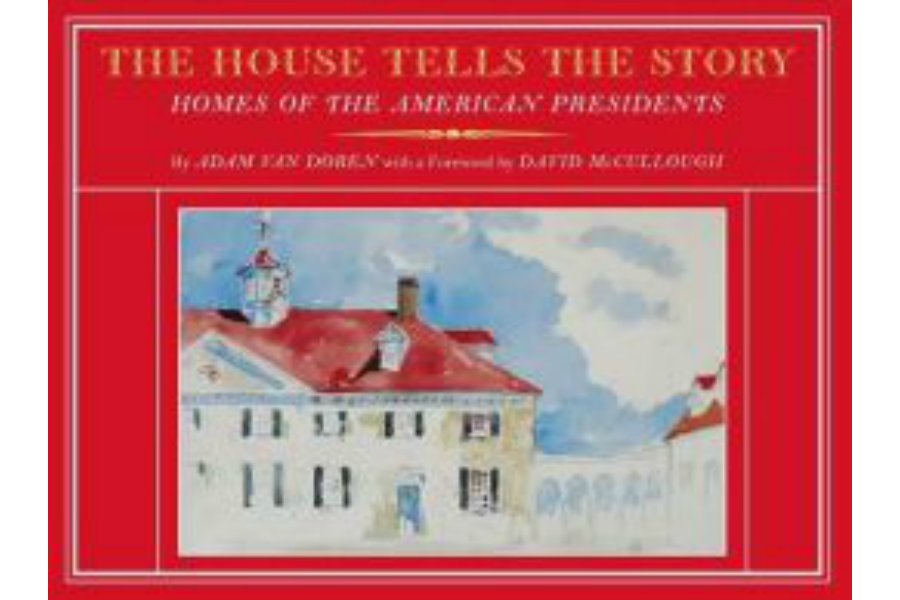'The House Tells the Story' offers a personal tour of 15 presidential homes
Loading...
IIf there’s still some open space on your coffee table,The House Tells the Story: Homes of the American Presidents should be on your shortlist. Artist Adam Van Doren paints and writes his way through the private dwellings of 15 US leaders, from Mount Vernon in Virginia to Prairie Chapel Ranch in Crawford, Texas – plus the White House, where all but the first president lived.
Most of the 15 homes, including Teddy Roosevelt’s estate, Sagamore Hill, on Long Island and Harry Truman’s humble home in Independence, Mo., are open to the public. Forty-two presidential residences, all told, can be visited, and the book includes information on them in the appendix.
Van Doren, who teaches at Yale University and has published several books on art, brings fresh eyes and an appreciation for architecture to the task of capturing some familiar places – and some decidedly not so: How many of us are conversant with Wheatland, home of James Buchanan, who is widely deemed one of the worst presidents of the United States?
The author’s paintings are the main attraction. They vary from full-page formal portraits to smaller casual compositions that illustrate his handwritten letters updating historian David McCullough on his presidential peregrinations. The two are friends: McCullough suggested the idea for the book to Van Doren in 2011 and wrote the foreword.
The author dutifully takes the measure of each place and relates it to its occupant. He is wont to wander off the beaten path to address his subjects from unlikely but intriguing perspectives.
At Springwood, Franklin D. Roosevelt’s Hyde Park, N.Y., manor, Van Doren eschews a portrait of the iconic facade for one of the rear of the house, looming in all its sprawling busyness atop a steep slope leading down to the Hudson River. It is a challenging vantage point that few visitors get to enjoy.
It is noteworthy that Van Doren selects Washington’s home rather than Jefferson’s for the cover portrait. He writes that the first US president, in addition to his better-known attributes, was also an aesthete who was intensely involved in the design of Mount Vernon: “Subtler touches, like the cupola, the faux rustication, and the red roof are all evidence of Washington’s refined sense of how to transform an ordinary farmhouse into a stately manor.” On this foray Van Doren makes time to visit the slave quarters to write about the story their stark architecture tells.
In another chapter he takes Woodrow Wilson to task for resegregating the federal workforce.
Van Doren’s paintings are garnished with a brief introduction to the career of each occupant and his home’s style and heritage. The illustrated letters are recommended primarily for their many telling images, which supplement the formal painting of each dwelling. These missives often repeat information from the introductions and include personal pleasantries unrelated to the business at hand. Their illustrations, however, capture myriad views of the exteriors and interiors, including historical artifacts such as Jimmy Carter’s outhouse and a silver tankard belonging to Abigail Adams.
The author’s prose is lively, conversational, and passingly informative – stronger on aesthetics than history, or geography for that matter. He has Sagamore Hill, for example, overlooking the Hudson. He freely confesses to arriving at Buchanan’s Wheatland knowing precious little about the 15th president. In his thumbnail biographies of all 44 presidents in the appendix, he notes that William Howard Taft was a federal judge but omits that he was the chief justice of the US Supreme Court.
But not to worry: This is a coffee-table book after all, and an accomplished, handsome, and even quite useful example of the genre, particularly if you are contemplating a heritage vacation.
David Holahan is a regular contributor to the Monitor’s books section.







